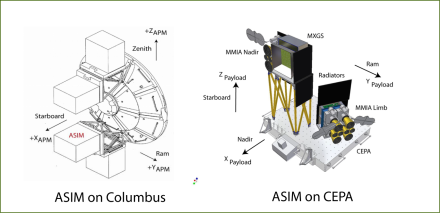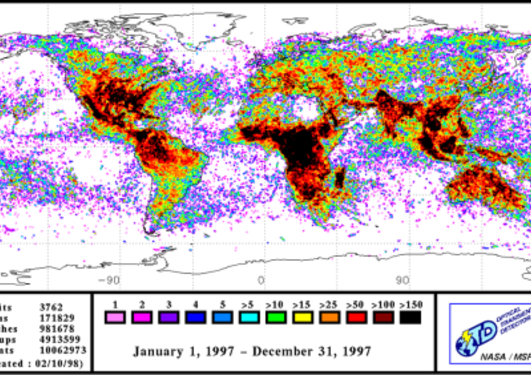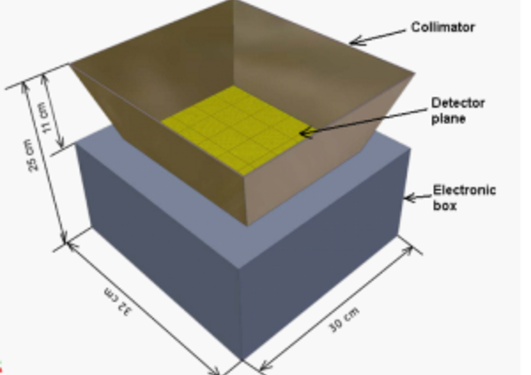ASIM
ASIM is an experiment proposed for the International Space Station (ISS) external facilities on the Columbus module. ASIM is aimed at the study of high-altitude optical emissions from the stratosphere and mesosphere, the Transient Luminous Events (TLEs: Red Sprites, Blue Jets, Elves) and the Terrestrial Gamma Flashes (TGFs) (Neubert et al., 2006).
Hovedinnhold
A Phase-A (Development and Design) study supported by ESA was finished June 2006. The team anticipates that the Phase-B study funded through the ELIPS-2 program will start March 1, 2007
The ASIM payload consists of six optical imagers, six UV photometers, and one X- and gamma-ray detector (red in the figure below). A sketch of the payload on the lower starboard of the Columbus module are shown in the above image.
The Atmosphere-Space Interactions Monitor (ASIM) is an international scientific collaboration
Principal Investigator
T. Neubert (Danish National Space Center, DNSC)
Co-Investigators
C. Budtz-Jørgensen (DNSC)
V. Reglero (University of Valencia, Spain)
N. Østgaard (University of Bergen, Norway)
E. Blanc (Commissariat a l'Energie Atomique, France).
The scientific team includes groups from more than 15 countries.
The main participants in the hardware development for the ASIM payload during Phase B are:
Project Management
TERMA A/S
MMIA
Danish National Space Center
Damec Research ApS
MXGS
Danish National Space Center
University of Bergen, Norway
University of Valencia, Spain
The miniature X-ray and gamma sensor (MXGS) and University of Bergen
The University of Bergen will, in collaboration with the Norwegian firm Ideas Gamma Medica and the Space Research Center, Polish Academy of Science (SRC PAS), Warszawa, Poland, design and build the detector boards and read-out electronics for MXGS including the High Voltage and Low Voltage Support.
The Norwegian science team involves researchers from the University of Bergen and Norwegian Institute for Air Research (NILU).
The Norwegian participation in ASIM is funded by ESA and the Research Section (Forskningsvadelingen) at the University of Bergen.



